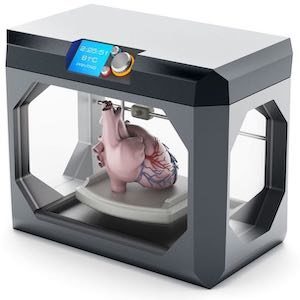By Dr. Ken Broda Bahm: 
Once, while I was monitoring a science-intensive agricultural contamination case, we asked permission for one of our expert witnesses to have the jurors peer into a dark box where they could see a petri dish with a bacteria culture under a black light. Our expert, not knowing better as it was his first time testifying, asked a juror, “Can you see it glowing?” “Yes!” the juror replied. of course, the other side swiftly objected to this educational conversation with a juror, but the purpose was served: For the jurors, it was a great interactive moment, like the best day from science class when they were kids. That testimony always reminds me of the fact that you need to use every tool possible, and a witness cannot always get there with just documents, photographs, and explanations.
There is an advantage in making your exhibits as physical as they can be: A three-dimensional digital model is better than a photo, and a physical model is better than either. A recent study (Errickson, Fawcett, Thompson & Campbell, 2019) confirms this in a courtroom persuasion context. Using a criminal case fact pattern in which jurors had to decide whether a fatal head injury was due to a fall or due to a shove, the researchers exposed participants to one of three ways of showing the injury to the victim’s cranium: A photograph, a three-dimensional digital model, or a 3-D printed physical model. Then they measured both verdict and case comprehension. While mode of presentation did not influence the verdict, it did influence the participants’ comprehension of the technical language in the case. In this post, I will share two quick implications of the study for those planning exhibit use in trial.
Go for Engagement
The researchers found that three-dimensional digital and printed models helped understanding. “The results demonstrate that visually, the clearer the jurors find the evidence and information depicted in the courtroom, the easier it is to understand the technical language used by the expert witness.” But that raises the question, why would a physical model lead to better language comprehension? One theory I have is that the use of these models led to more engagement during persuasion. The thought is that the more complete representations make it easier for them as jurors to continue paying attention, and when they pay attention, they understood the terms better. So think not just about what you will show the jury, but also about how they will interact with it, either mentally or physically.
But Respect that Jurors Are Still Using Their Own Process.
There was one other interesting feature of the study results. As noted, the case asked jurors to decide whether a fatal injury was the result of a fall or an assault. But among those who reached a “guilty” verdict, the most common rationale after looking at the digital and physical models related to participants’ views on the degree of force that would have been necessary to cause such an injury. Interestingly, that was not part of the evidence or the argument, that was just something the jurors came up with on their own after looking at the physical models.
So, the reality is that jurors are going to bring their own thoughts, and sometimes their own arguments, to their analysis of an exhibit. That can be kind of scary, but it comes with the territory. Think about not just whether jurors will say “yay” or “nay” to the information you provide them, but think also about how they will react and form theories of their own. The more you know about the parameters of these reactions the better, but that sphere of relative independence is an important part of our jury system.
______
Other Posts on Visual Persuasion:
- Be Multi-Modal in Your Courtroom Visuals
- Beware of Nonverbal Pseudoscience
- Feed Your Millennials Visual Information
Errickson, D., Fawcett, H., Thompson, T. J. U., & Campbell, A. (2019). The effect of different imaging techniques for the visualisation of evidence in court on jury comprehension. International Journal of Legal Medicine, 1-5.
Image credit: 123rf.com, used under license.